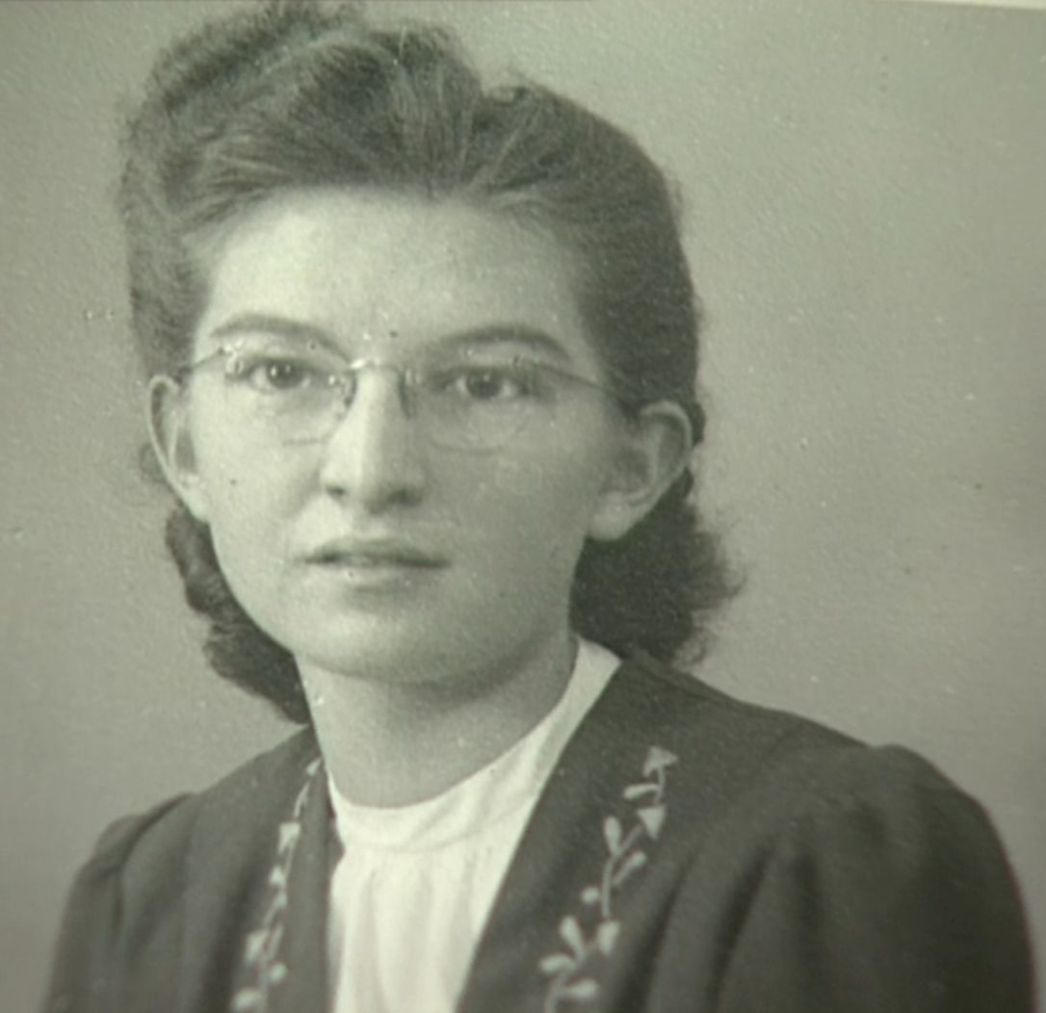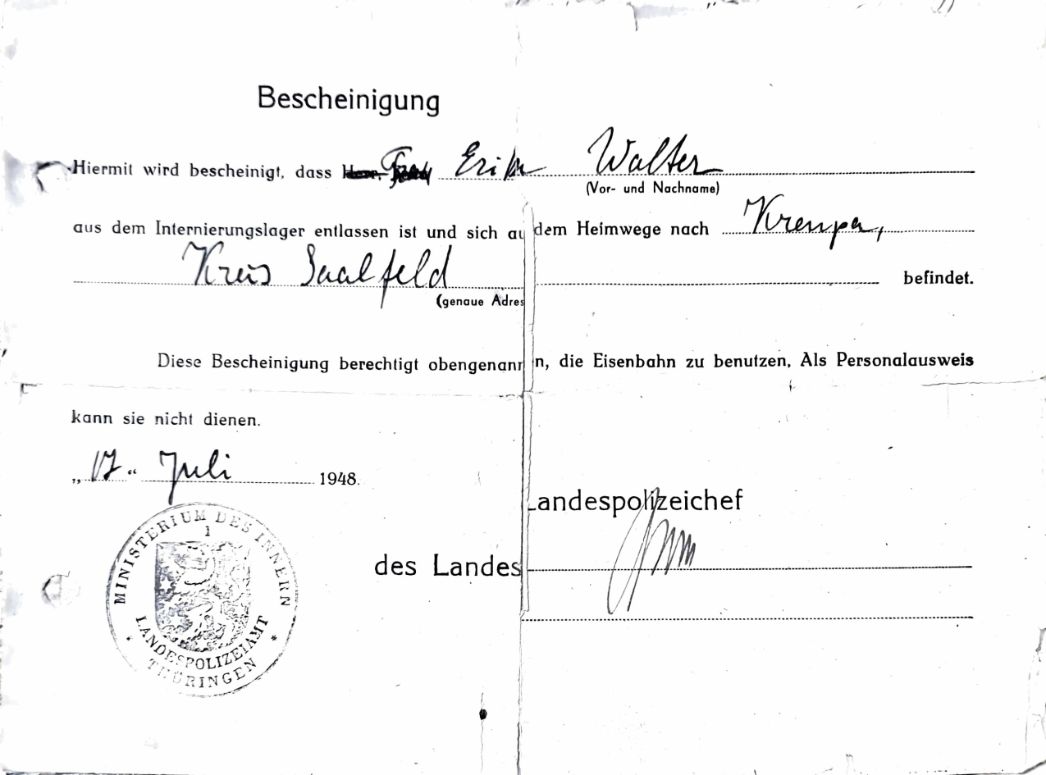Erika Pelke (née Walther) was born in Krölpa in 1922. After graduating from elementary school, she trained as a seamstress. By the age of eleven, she was an active member of the Hitler Youth's Jungmädelbund (Young Girls’ League) and, from 1936 on, the Bund Deutscher Mädel (League of German Girls), where she took on a leadership role in 1940. She joined the NSDAP in 1943.
On December 20, 1945, the Soviet secret service arrested her on suspicion of being a “Werwolf” and for her activities in the BDM. She was taken to the Saalfeld prison, where she was subjected to violence and lengthy interrogations. In June 1946, Erika Walther was sent to Special Camp No. 2, where she was able to work as a seamstress.
Erika Walther was released from the special camp in July 1948 and returned to her family in the Thuringian forest. She married Heinz Pelke in 1950 and had two sons with him. She had to remain silent about her imprisonment until 1989/90. From the 1990s onwards, she became involved as a contemporary witness at the Buchenwald Memorial. Erika Pelke died in Pößneck in 2008.


"Get woken up by the guard at 6:00 a.m., wash, receive soup, eat, and then line up for roll call in front of the barracks. We usually stood for half an hour; then the work details marched off, accompanied by a camp guard. Those who did not work had to carry out small tasks in the house early in the morning, such as cleaning a window or mopping a section of the hallway. After that, you could either go into the garden or stay in the house until noon, but you were not allowed to go to bed. At noon, some of the work details returned, while others ate lunch at their workplace. There was a midday rest period until 2:30 p.m. After that, some of the work details left again. In the afternoon, bread was delivered, and by 6:00 p.m., everyone was back except the nurses in the infirmary. The evening roll call was at around 7:00 p.m., and lights out was at 9:00 p.m."
(Gudrun Lenzer, Women in the Buchenwald Special Camp 1945-1950. Internment and Life History Classification, Münster 1996, p. 71.)
Erika Pelke on everyday life in Special Camp No. 2, 1996.
Most of the internees in the Buchenwald special camp were not given work. Erika Pelke was able to work as a seamstress.

In July 1948, Erika Pelke was released from the Buchenwald Special Camp. The document served as her travel ticket. She returned to her family in the Saalfeld district.

"After my initial joy at being outside, I had a terrible mental breakdown, because for all those years, almost five years, I had lived with the idea—which was idiotic, but it was probably the only thing that kept me going: 'If you survive all this, then everything will be fine. Then, then you'll be healthy enough and life will go on again.' And now I came back to such terrible circumstances [i.e., the family situation and destroyed Berlin] [...] Every evening, as I lay there on my couch, I cried myself to sleep and thought: ‘You spent five years in prison waiting for liberation, and now everything is so terrible! ’ It was a terrible time."
(Gudrun Lenzer, Frauen im Speziallager Buchenwald 1945-1950. Internierung und lebensgeschichtliche Einordnung, Münster 1996, p. 147.)
Beginning in the 1990s, Erika Pelke became involved in researching the history of Soviet Special Camp No. 2 Buchenwald. She donated objects to the memorial and recounted her experiences in writing and in interviews.

